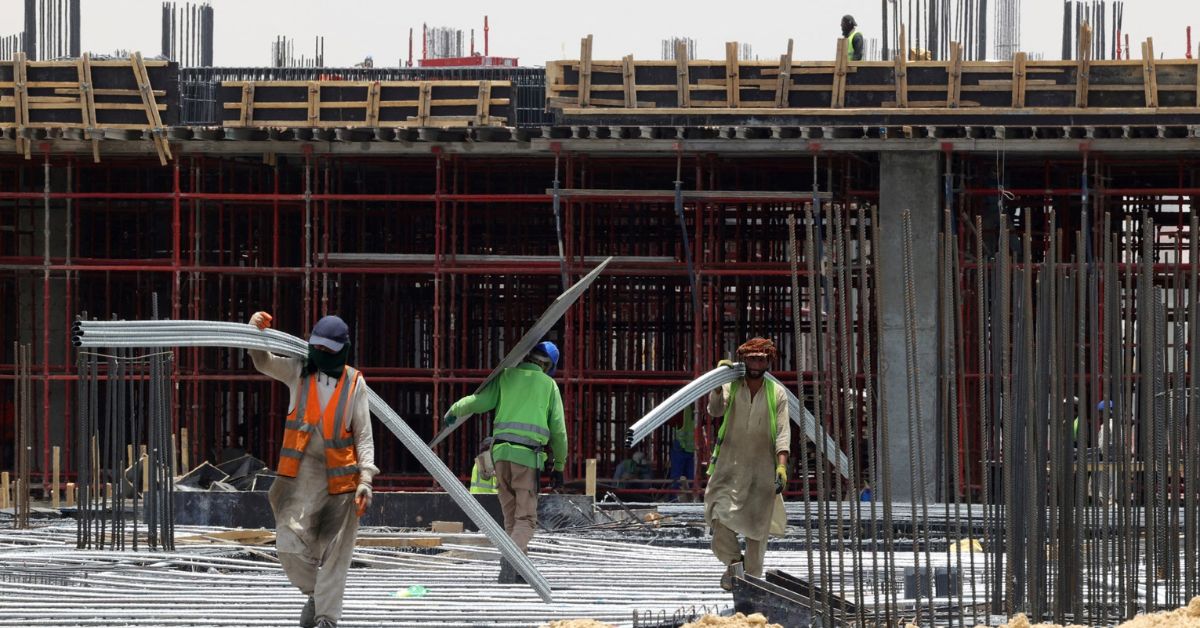RIYADH — Saudi Arabia held the largest portion of the construction market in the MENA region during the first half of 2023. Despite global economic challenges, the region sustained its robust performance, backed by construction project contracts awarded in the first half of 2023, totaling US$ 101 billion.
According to a construction market report by JLL, Saudi Arabia represented about 67 percent of the MENA’s construction market, equating to nearly US$ 44 billion. The UAE followed in second place with US$ 23 billion, as the total value of projects awarded in both countries increased from the same period the previous year.
Egypt ranked third, with the value of projects awarded during this period falling below the prior year’s figures. However, Egypt continues to have a strong lineup of future projects.
In the UAE, the residential sector stood out as the most significant, with project contracts in this sector surpassing US$ 9 billion. Dubai alone made up roughly 75 percent of the total value of these projects.
At a glance MENA Construction Market (H1 2023): Total contracts awarded amount to US$ 101 billion. Saudi Arabia's Share: Represents 67% of the MENA construction market, totaling nearly US$ 44 billion. UAE's Contribution: Secures second place with project contracts worth US$ 23 billion. Egypt's Position: Ranks third, despite a dip in project values from the previous year. UAE Residential Sector: Project contracts exceed US$ 9 billion, with Dubai contributing about 75%. Residential Construction: Saudi Arabia and Egypt contracts valued at US$ 5 billion and US$ 771 million, respectively. Entertainment Projects in Saudi Arabia: Contracts reach US$ 2 billion, indicating growth in hotel and mixed-use sectors. MENA's Ongoing Projects: Estimated value surpasses US$ 3 trillion, with Egypt, Saudi Arabia, and the UAE holding over 60%. Saudi Arabia's Project Value: Largest share at 35%, approximating US$ 1.3 trillion. Egypt's Construction Forecast: Expected to grow at a 9% compound annual rate from 2024 to 2027. Significant Saudi Projects: They include "Sidra" neighborhood, Central Jeddah project, and Diriyah Gate project. UAE Construction Forecast: Anticipated to rise by over 3% annually from 2024 to 2027. Dubai's Construction Index: Hits a four-year high at 55.1 points in June 2023.
Residential construction contracts in Saudi Arabia and Egypt were recently valued at US$ 5 billion and US$ 771 million, respectively. Moreover, contracts for entertainment projects in Saudi Arabia hit US$ 2 billion, showcasing impressive growth in the hotel and mixed-use real estate sectors.
The overall estimated value of ongoing projects in the Middle East and North Africa region surpasses US$ 3 trillion. Egypt, Saudi Arabia, and the UAE collectively hold over 60 percent of this value. Saudi Arabia’s share is the largest at 35 percent, approximately US$ 1.3 trillion, while both Egypt and the UAE each have projects valued around US$ 500 billion.
Future Expectations
Global Data forecasts that Egypt’s construction market will grow in value at a compound annual rate of 9 percent from 2024 to 2027, driven by the robust transportation, renewable energy, and housing sectors. While residential construction led in terms of project value in 2022, it fell to the second spot in the first half of 2023.
On the other hand, the unwavering economic diversification efforts, central to Saudi Vision 2030, are expected to boost the construction market value in Saudi Arabia by an average of 4 percent annually between 2024 and 2027.
As per JLL’s report, the head of the Saudi Contractors Authority highlighted significant projects like the “Sidra” neighborhood by “Roshen” company, the Central Jeddah project, and the Diriyah Gate project by the Diriyah Gate Development Authority. Additionally, Public Investment Fund projects such as the “Oxagon” Industrial City, The Line, Sindalah Island, Trogena, and other residential and tourism ventures are progressing swiftly. The construction sector now accounts for 6 percent of the GDP, making it the kingdom’s second-largest non-oil sector.
Investments in infrastructure and real estate, encompassing residential, hospitality, mixed-use, and commercial properties, are anticipated to propel the UAE construction market’s value, increasing it by over 3 percent annually from 2024 to 2027. Data from Emirates NBD shows that Dubai’s construction index reached a four-year peak at 55.1 points in June 2023.
Commodity prices surged in the fourth quarter of 2022 and the first quarter of 2023 due to rising regional and global demand and increased input costs. However, they leveled off in the second quarter of 2023. The latter half of the year saw declines in prices for aluminum (-15 percent), iron ore (-13 percent), copper (-7 percent), and Brent crude (-38 percent). The trajectory of MENA construction prices remains uncertain, as they currently align with both local and global economic factors.
The report also indicates that the average oil price is projected to be $85 per barrel in 2023, a $15 drop from 2022. This decrease could lead to reduced fuel and production expenses, offering potential savings in both production and transportation.
Oil prices often influence project investments in oil-producing regions like the Middle East. With the stabilization of oil prices, construction has become more viable. However, in economies heavily reliant on oil revenues, sudden oil price shifts can affect construction funding.
On the inflation front, the UAE is projected to see an average annual inflation rate of 3 percent. This uptick is attributed to market dynamics related to commodity and construction material price fluctuations. Meanwhile, forecasts suggest that Saudi Arabia will experience an average annual inflation rate of 6 percent in 2023.
For 2024, JLL anticipates a 2 percent increase in tender price inflation in the UAE compared to the prior year. This prediction is based on the stabilization of commodity prices in the latter half of 2023, the value of current projects relative to future demand, and data gathered from market sources.








